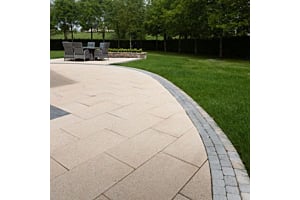As a leading supplier of Fire and Safety Doors, Haldane Fisher fully support Fire Door Safety Week taking place from 24th – 30th September.
The purpose of Fire Door Safety Week is to raise awareness of the critical role that fire doors play in protecting property, in saving lives and drawing attention to a legacy of neglect that has undermined fire door performance.
This campaign aims to engage and educate building owners and building users on how to use Fire Doors properly. Safety is of paramount importance in commercial buildings, such as hospitals, schools and offices, and when it comes to fire doors, it is important that everyone is aware of the important role they have in people’s safety.
So let’s take a deeper look at the role they play in our daily lives.
What is a Fire Door?
A Fire Door is a door with a fire-resistance rating used as part of a passive fire protection system to reduce the spread of fire and smoke between separate compartments of a structure and to provide a safe departure out from a building or structure.
Fire Doors are specialist doors that are tested against the elements and purpose-built to withstand roaring fires for as long as possible. They have a few vital safety features and really can be the difference between life and death.
If you own a commercial or non-domestic property, there are strict regulations and guidelines to follow, ensuring the doors can withstand certain heats. Fire doors can also have massive advantages for private properties.
Where should Fire Doors be fitted?
The guidance requires that a building is divided into compartments, protecting escape routes, such as corridors and staircases.
In domestic dwellings above two levels, every door leading to the stairwell (at all levels) must be a fire door, where the door leads to a habitable room. (i.e not a bathroom or w/c).
Fire doors are also required in loft conversions; between house and integral garage; and between the business and residential elements in a mixed-use building. For non-domestic buildings, guidance is divided into two sections based on horizontal and vertical escape routes.
What are the types of Fire Doors?
There are many different types of fire doors available – from different materials to varying fire ratings and protection levels. The effectiveness of a fire door and the type required depends on its location in the building, and the type of fire hazards surrounding it.
Timber fire doors are typically given an FD rating, provided by the British Woodworking Federation to specify the level of protection. It is important to know the specifications of a fire door, as the fire door code shows how many minutes of fire a door can withstand, for example an FD30 code door has been tested to withstand 30 minutes. The most common of the codes is FD30 which contains a fire for 30 minutes or FD60 containing a fire for 60 minutes.
The ratings are given after the doors have undergone specific fire testing, specified in BS 476-22 or BS EN 1634-1 which expose them to similar effects that they would be subject to in the event of a fire. These tests assess the efficiency and integrity of all aspects of the door, including the door frame and all hardware, as well as the door itself.
Integrity failure happens when cracks/openings develop on the door due to the pressure of the fire, which then starts to allow hot gases and smoke to pass through. Stability failure occurs when the door starts to collapse due to the conditions.
There are glazing options with toughened fire glass can withstand temperatures in excess of 1600°F, compared to just 250°F of standard glazing. Glass fire screens and doors can also provide performance up to 120 minutes integrity.
What are the components of a Fire Doorset?
Fire doorset components are what makes up a fire door and are ultimately essential to its successful operation. These additional components help the fire door perform to its certified requirements. Including them as part of the installation is the only way to ensure that the fire door does its job.
These products include:
- Intumescent strips and Smoke Seals
- Glazing system
- Fire signage
- Fire-tested ironmongery, including: -
- Hinges
- Door closers
- Locks and Latches
- Air Grilles
- Panic escape ironmongery
How do I know a Fire Door is working correctly?
Here is a five step guide to checking fire doors in your premises to ensure they are working correctly:
Check for certification. Is there a label or plug on top (or occasionally on the side) of the door to show it is a certificated fire door? You can use the selfie function on your camera phone or a mirror to check. If there is, that’s good news, otherwise report it to whoever is in charge of your building.
Check the gaps. Check the gaps around the top and sides of the door are consistently less than 4mm when closed. You can use a £1 coin to give a feel for scale, this is about 3mm thick. The gap under the door can be slightly larger (up to 8mm is not uncommon), but it does depend on the door - as a rule of thumb, if you can see light under the door, the gap is likely to be too big. It’s good news if the door fits the frame and it’s not damaged. If not, report it. If the gaps are too big smoke and fire could travel through the cracks.
Check the seals. Are there any intumescent seals around the door or frame, and are they intact with no sign of damage? These seals are usually vital to the fire door's performance, expanding if in contact with heat to ensure fire (and in some cases smoke) can’t move through the cracks. If not, report it - the door may not be properly maintained and in the intensity of a fire may not protect you long enough.
Check the hinges. Are the hinges firmly fixed (three or more of them), with no missing or broken screws? If you see problems, report it - the door is obviously not properly maintained and in the intensity of a fire may not perform and hold back the fire for long enough.
Check the door closes properly. Open the door about halfway, let go and allow it to close by itself. Does it close firmly onto the latch without sticking on the floor or the frame? If not, report it. A fire door only works when it’s closed. A fire door is completely useless if it’s wedged open or can’t close fully.
Summary
There are about 3 million new fire doors bought and installed every year in the UK, the vast majority made from timber. Fire doors are often the first line of defence in a fire and their correct specification, maintenance and management can be the difference between life and death for building occupants. However, they remain a significant area of neglect, often the first thing to be downgraded on a specification and mismanaged throughout their service life, propped open, damaged and badly maintained.
We hope you find this blog informative regarding what a Fire Door is, its components and how to check they are working correctly. If you have any concerns regarding the fire doors in any property, place of work or public building, please contact the building manager or owner. For more information on the supply of Fire Doors or what is involved in Door Reprocessing, please contact your local Haldane Fisher branch.




